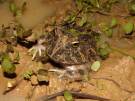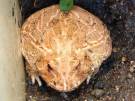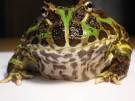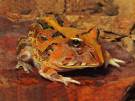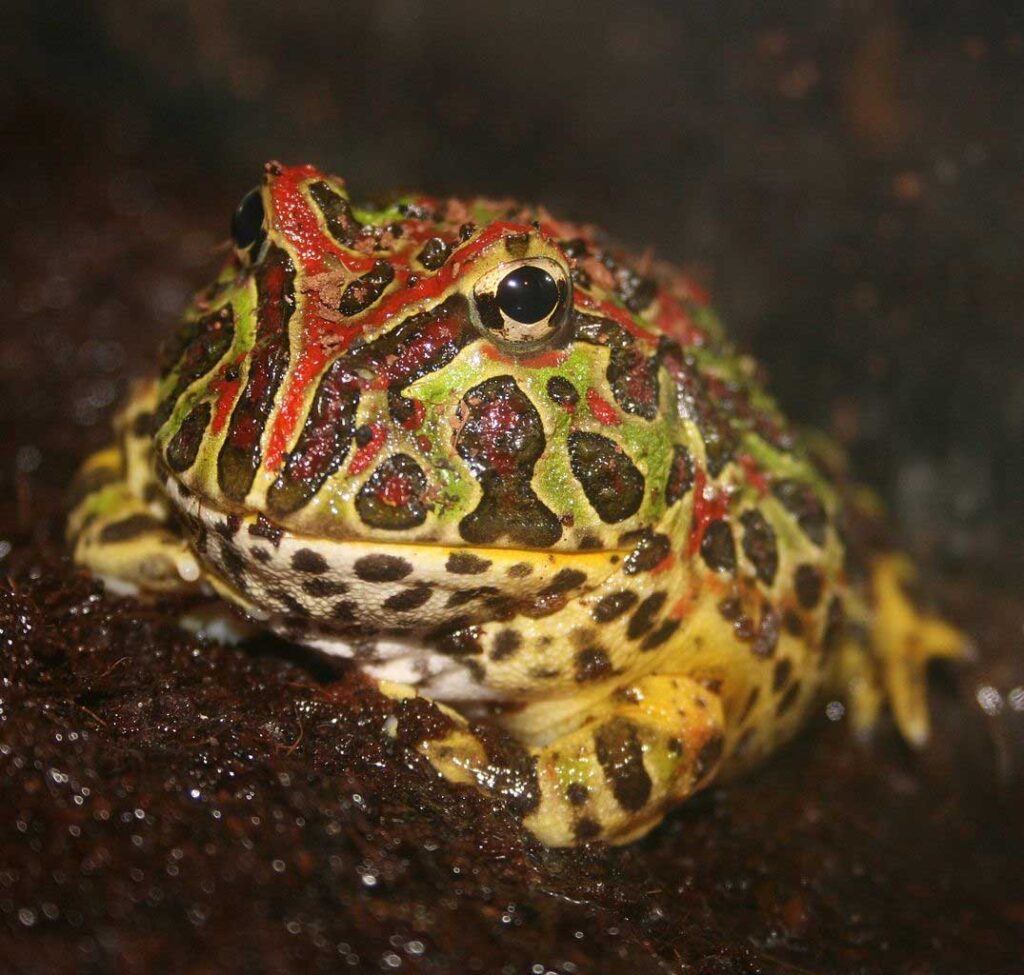
Content |
|---|
In addition to the horn-shaped projections on the eyes that give them their name, the South American horned frogs (genus Ceratophrys) have other characteristic features: A huge mouth and an almost circular body. The South American horned frogs They are originally from South America., but now they are bred in many color varieties. The most common species are the Surinam horned frog (Ceratophrys cornuta), the Cranwell's horned frog (Ceratophrys cranwelli) and the Common foreshortening (Ceratophrys ornata). Occasionally, other species are offered - some as wild-caught specimens- as well as frequently sterile crosses. If possible, use captive-bred species.
Images "South American horned frogs"
Sex differences
Differentiation of the sexes is difficult and is only possible in sexually mature animals.. Males develop heat calluses on the front legs, they usually have a darker throat region and call during the mating season.
Behavior
Like the South American horned frogs they occasionally eat their peers, it's better to keep them alone.
The South American horned frogs they are twilight and night.
Terrarium
The South American horned frogs they are hunters on the prowl, who like to dig and only actively seek food when hungry. One terrarium for an adult specimen it must measure at least 80 x 40 x 40 cm. (length x widht x hight).
Fluorescent tubes with a daily light duration of 10 to 12 hours are suitable for lighting. The optimum is a slight temperature gradient in the terrarium of between 24 and 30 ° C with a 80 % moisture, so that the horned frog you can choose your preferred place of residence. At night, the temperature should drop to about 23 °C y, at the same time, humidity should rise to 90 or the 95 %. The temperature can be regulated with the help of a heating mat installed outside the terrarium and that covers a maximum of one third of the floor surface. The heating mat should be controlled with the help of a thermocontroller to avoid overheating. Moisture can be achieved by spraying the terrarium With warm water. Precise thermometers and hygrometers are needed to measure temperature and humidity.
The height of the excavatable substrate (for example, a terrarium soil mix, coconut substrate, moss) must allow the frog to burrow completely and be of at least 10 cm for adult animals. The substrate should always be slightly moist (but not wet). This can be achieved by placing a drainage layer of expanded clay on the bottom.. Additional withdrawals (coconut shells, etc.), a shallow water basin and natural planting complete the assembly.
Diet
The South American horned frogs they are voracious eaters and prefer live insects (crickets, grasshopper, cockroaches, etc.), earthworms, slugs and small vertebrates. Regular administration of a mineral supplement ensures healthy bone growth. Mealworms, the zophobas, wax moths or mouse pups should be fed only rarely due to their high protein and fat content.
Caution: the South American horned frogs tend to become obese. In the case of adult animals, it is enough to feed them every two or three days.
Care
Food scraps and feces should be removed daily. Animals defecate in their self-dug hiding place; an occasional change of location should always be used to renew the substrate from the previous site. It also, all substrate must be replaced regularly. The water bowls should also be cleaned daily and filled with fresh water.
Animal health must be monitored daily. The most frequent health problems in the South American horned frogs are the softening of the bones, wasting or fatty degeneration. Skin changes are also more common, especially in the belly, often recognizable by a red coloration. So, the belly of the animals should be checked at least once a week. If there is any abnormality, consult a veterinarian who knows amphibians.
Acclimatization and handling
Amphibians are animals of pure observation and should NOT be petted. In the first days in his new home, animals need adequate rest to get used to their new environment. If required, animals must not be caught by hand, but with the help of a container. Only larger animals can be handled with care by hand (protection gloves). But, the South American horned frogs they tend to lash out at anything that moves and have teeth with which they can cause painful wounds. This is another reason why it is advisable to capture the animals with the help of a container..
Special features
Due to the rapid growth of young animals, a good supply of calcium and vitamins is very important.
The South American horned frogs are not subject to species protection legislation.
